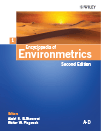Biomass†
Based in part on the article “Biomass” by Bernard R. Parresol, which appeared in the Encyclopedia of Environmetrics.
Abstract
Biomass is the mass or the weight of living tissue provided by a given area or volume of the earth's surface. It is commonly subdivided into five trophic levels forming the basic food chain. In terrestrial ecosystems, the biomass distribution resembles a pyramid, where mass progressively decreases from producer to top predator. Some aquatic systems may have a dipyramid-shaped biomass distribution, that is, narrow at the bottom and top, and wide in the middle. Plant biomass recycles atmospheric carbon. If we replant harvested biomass, there is no net gain in atmospheric carbon to add to the greenhouse effect. Large-scale biomass burning, that is, deliberately set fires, is a significant source of carbon dioxide and particles in our atmosphere. Bioenergy is a fuel energy that can be derived directly or indirectly from biological sources. Biomass energy from wood, crop residues (known as bagasse), and dung remains the primary source of energy in developing regions. Satellites scan the normalized difference vegetation index over terrestrial habitats, and scan sea-surface chlorophyll levels over oceans to estimate global net primary production, which averages about 104.9 billion tonnes C per year. Local biomass resources are determined from broad-based inventories and statistical predictions.



